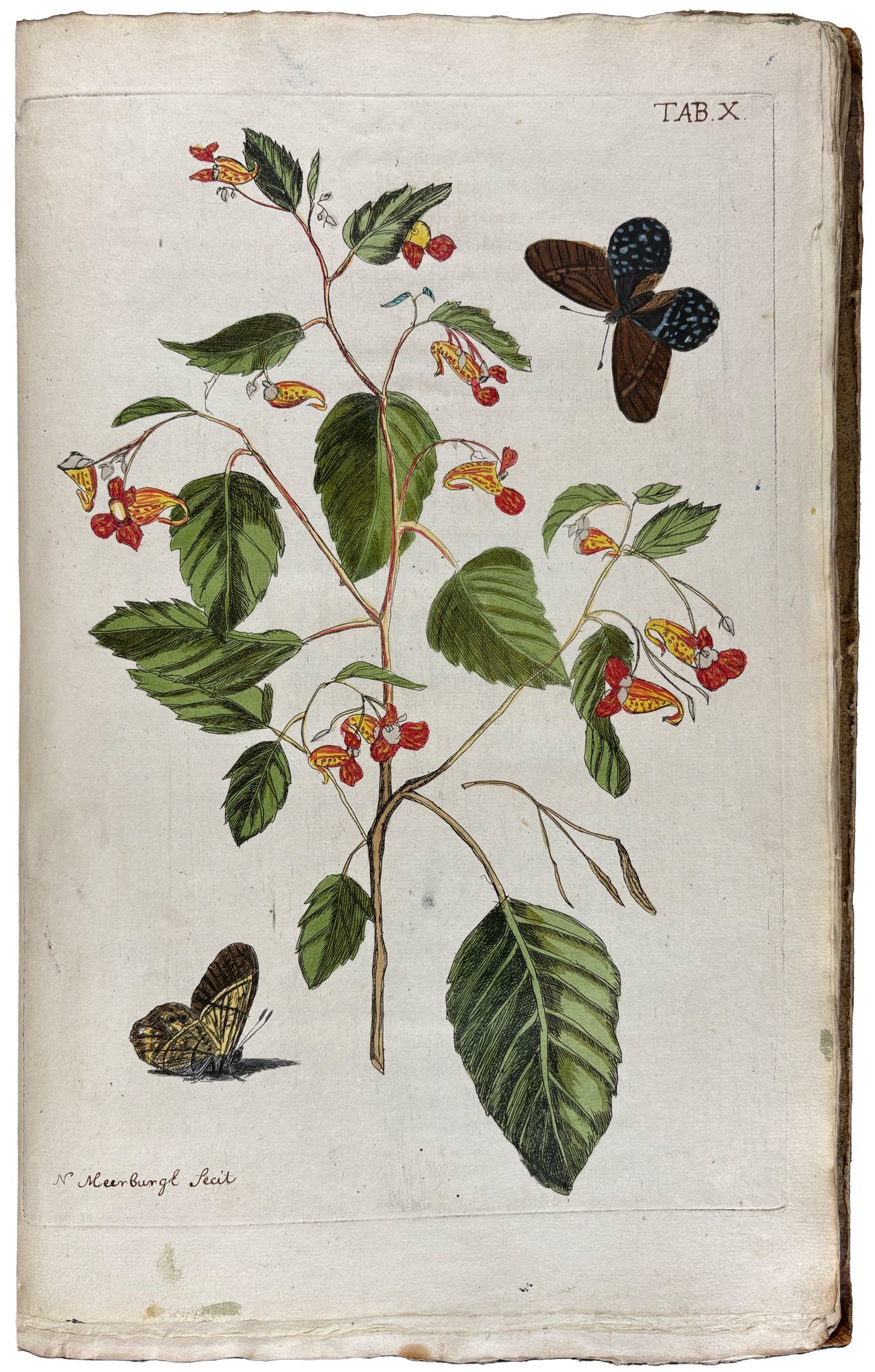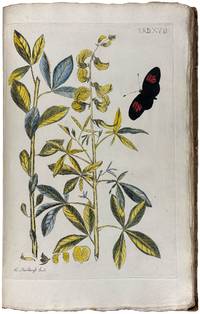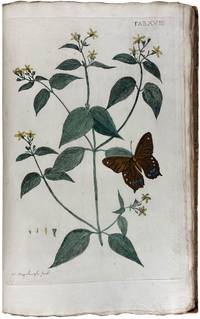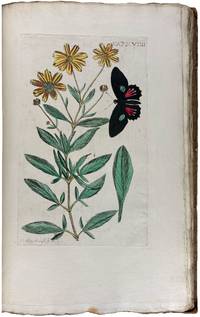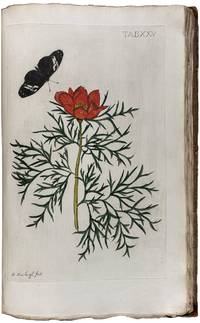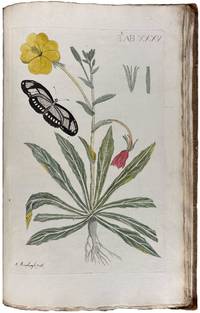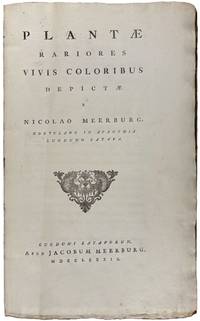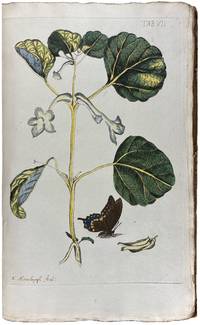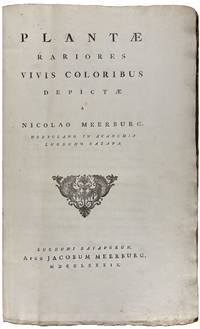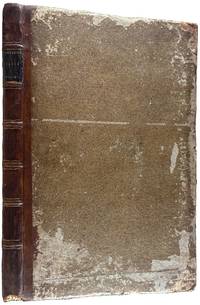Plantae rariores vivis coloribus depictae
- SIGNED Folio
- Leiden: Jacob Meerburg, 1789
Leiden: Jacob Meerburg, 1789. Folio. (17 x 10 3/4 inches). A-F² [G]². Text in Latin. Illustrated with 55 hand-coloured engraved plates. Contemporary calf and paper boards, spine with gilt lettering piece
A rare and beautiful work on flowering plants and butterflies, drawn and engraved by the curator of the Leiden Botanical Garden.
Nicolaas Meerburgh served as curator of the Leiden Botanical Garden from 1774 until his death in 1814. This handsome folio records specimens cultivated under his care, each plate combining a precisely rendered plant with a butterfly or moth taken from Meerburgh's own collection. Meerburgh both drew and engraved the images in this work and intended it as an accurate visual guide to living collections while also satisfying late-eighteenth-century taste for coloured botanical books. Plantae rariores is the Latin, revised form of the author's Dutch Afbeeldingen van zeldzaame gewassen (1775-1780). Meerburgh adopts Linnaean binomials not only for the plants but also for the accompanying insects. The plates are notable for their light, transparent colour and their elegant pairing of botany and entomology, a Dutch contribution to the period's scientific florilegia and a revealing document of the Leiden garden, one of Europe's oldest.
Dunthorne 203; Great Flower Books (1990), p. 67; Nissen BBI 1333; Stafleu TL2 5785.
A rare and beautiful work on flowering plants and butterflies, drawn and engraved by the curator of the Leiden Botanical Garden.
Nicolaas Meerburgh served as curator of the Leiden Botanical Garden from 1774 until his death in 1814. This handsome folio records specimens cultivated under his care, each plate combining a precisely rendered plant with a butterfly or moth taken from Meerburgh's own collection. Meerburgh both drew and engraved the images in this work and intended it as an accurate visual guide to living collections while also satisfying late-eighteenth-century taste for coloured botanical books. Plantae rariores is the Latin, revised form of the author's Dutch Afbeeldingen van zeldzaame gewassen (1775-1780). Meerburgh adopts Linnaean binomials not only for the plants but also for the accompanying insects. The plates are notable for their light, transparent colour and their elegant pairing of botany and entomology, a Dutch contribution to the period's scientific florilegia and a revealing document of the Leiden garden, one of Europe's oldest.
Dunthorne 203; Great Flower Books (1990), p. 67; Nissen BBI 1333; Stafleu TL2 5785.


